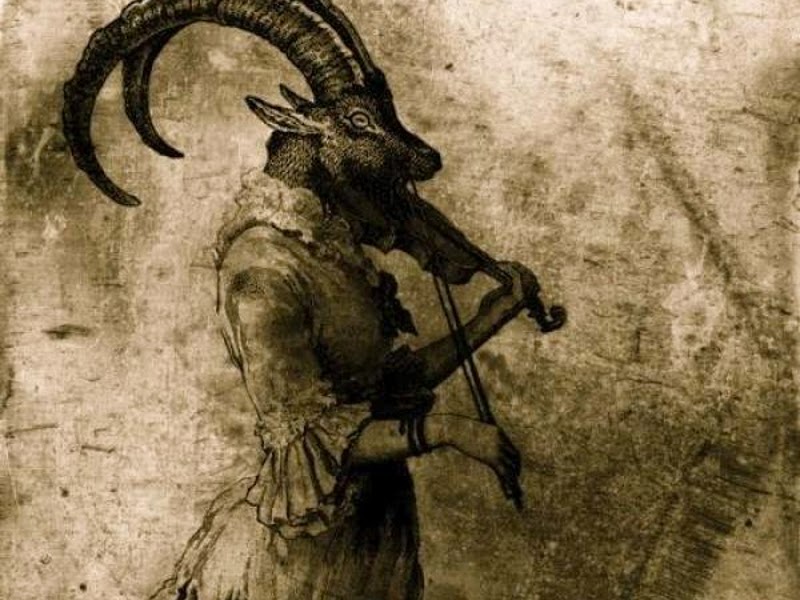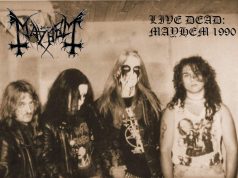
Diabolus in Musica (The Devil in Music), also known as Tritone, is a musical interval with a three-tone pause between one note and another. It creates a dissonant sound, a screech that we could compare to a cry, a nocturnal squeaking, a solitary pendulum, depending on the use. For this reason, the Tritone, since the Middle Ages, has earned the reputation of Devil in Music.
Diabolus in Musica – the legend of the Tritone
mi contra fa est diabolus in musica
From this brief sentence, attributed to Guido d’Arezzo, a pioneer of modern music theory, the legendary story of the Tritone branches out. We are on the crest of the year one thousand and the musical systems of the time are very different from ours. Guido doesn’t talk about the “clash” between the notes Mi and Fa. The monk simply admonishes the use of the Tritone. In his opinion, it generates an unbearable disharmony for human ears.
It is necessary to remember the role of music in a Church that held the study and diffusion of it. It is not uncommon to read astonishing apotheosis of the art of music by theologians and clergymen. Music, without body and pure harmony, could only refer to God, often more effectively than the doctrine itself.
But if a chord in three parts, such as the Tritone, which only brings to mind the Holy Trinity when it is read, freezed the blood of the listeners, then something was wrong. The superstition spread that the Diabolus in Musica was actually an artifice of the devil, a sort of evil foot against the divine art of composition. Needless to say, the Tritone was branded as a forbidden chord more because of its difficulty – especially in singing – than because of religious warnings.
Examples of Diabolus in Musica

When an instrument is banned, in all likelihood, there will be hordes of brave people ready to make heresy their workhorse. Beyond the less provocative examples, as in the case of Carlo Gesualdo and Beethoven, from the 18th century onwards, we are witnessing an explosion of Devil in Music. The devil becomes part of the musical culture, thanks also to the influence of literature – where the figure of Satan mainly develops.
The devil himself, said Giuseppe Tartini, suggested to me in a dream a melody of extraordinary beauty. It is the Devil’s Trill, a true manifesto of dark harmony.
Franz Liszt, who has been the subject of legendary speculation for many years, is a striking case. Curious and passionate people have carried on bizarre interpretations of his most disturbing compositions, such as the dedicatory to Dante’s Inferno and the compositions in honour of Goethe’s Faust. Will it be a coincidence that the Diabolus in Music marks the passage of the famous Mephisto’s Waltz?
Also unmissable Night on Bald Mountain by M. Mussorgsky. Those of you who have seen Walt Disney’s Fantasia at least once will remember the semi-apocalyptic sequence of the devil. The background is precisely this musical work, a true concatenation of Devil in Music.
Demons, spirits and witches for the series of Hector Berlioz’s Fantastic Symphony. The Diabolus in Music is the undisputed protagonist of the fifth movement: Dream of a Night of Sabbath.
Finally, I mention the most famous composition when it comes, at least, to the dark side of classical music: the Dance Macabre by Camille Saint-Saëns. Few adjectives are able to describe the magnificence of this piece, which of Devil in Music makes its cadence.
Diabolus in Musica today

Prokofiev and the Devilish Suggestions, Dvorak and the Sabbath of the Witches, Grieg with his To The Devil. The Tritone has passed through the hands of the major composers to arrive at the most diverse genres. It is found as much in the musical West Hide Story, without any supernatural implication, as in the Black Sabbath. Thanks to the latter, the intervals of the Diabolus in Music have given bread to the scales not only of metal, but of Gothic music in general.
Would you have ever said that the intro of the Simpsons also uses the Devil in Music? Danny Elfman, Tim Burton’s trusted composer, scanned the opening of the famous cartoon on a sequence of dissonant notes, almost capable of spelling out the family name of the protagonist.
As legendary as it may be, the Diabolus formula alone in Music always retains a great charm. The Slayer take the title of their seventh album from the dark fame of the Tritone. But that’s not all. A Spanish band, to the idea of Guido d’Arezzo, owes even the full name of the band.













